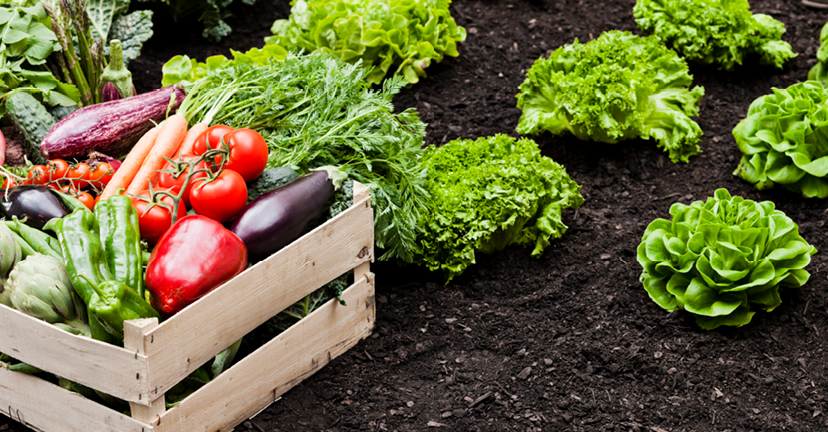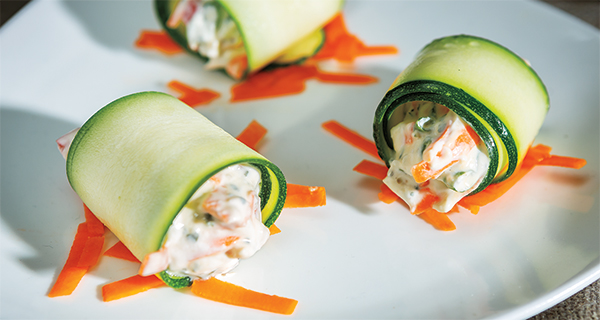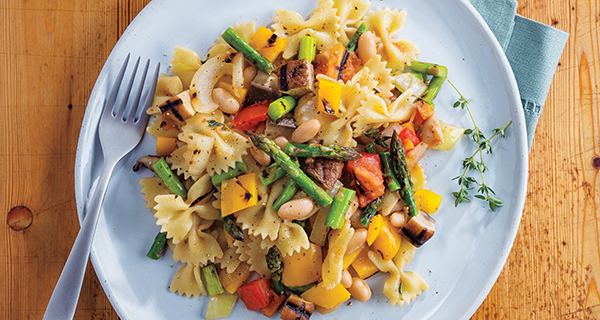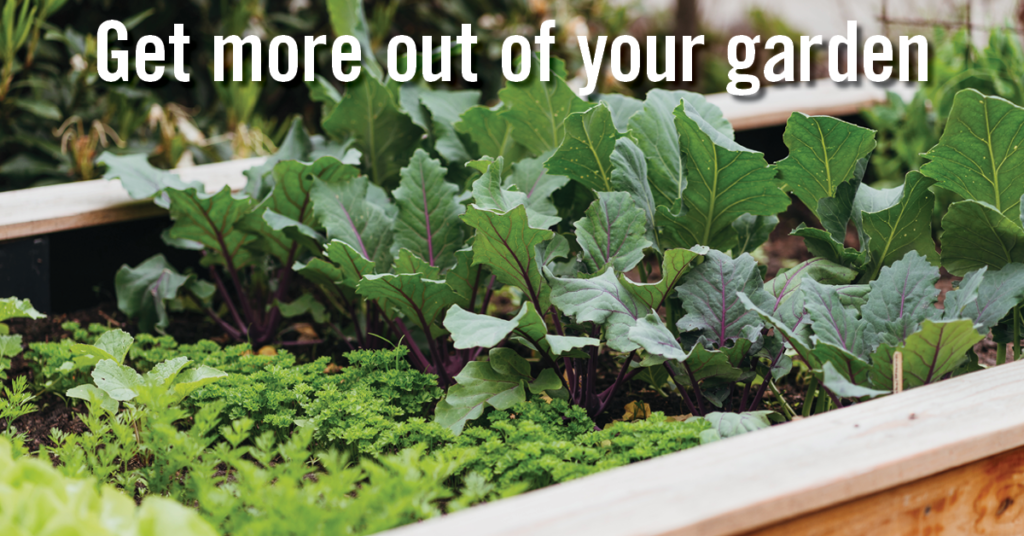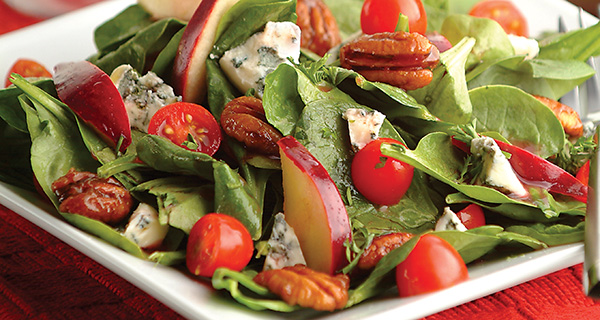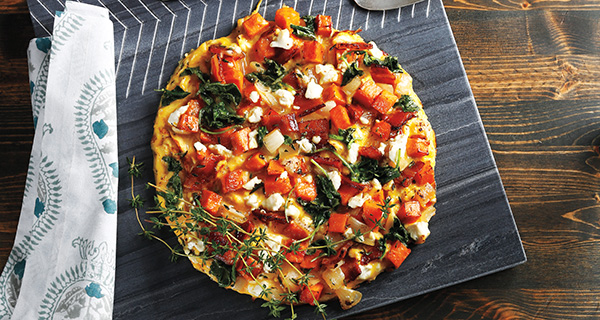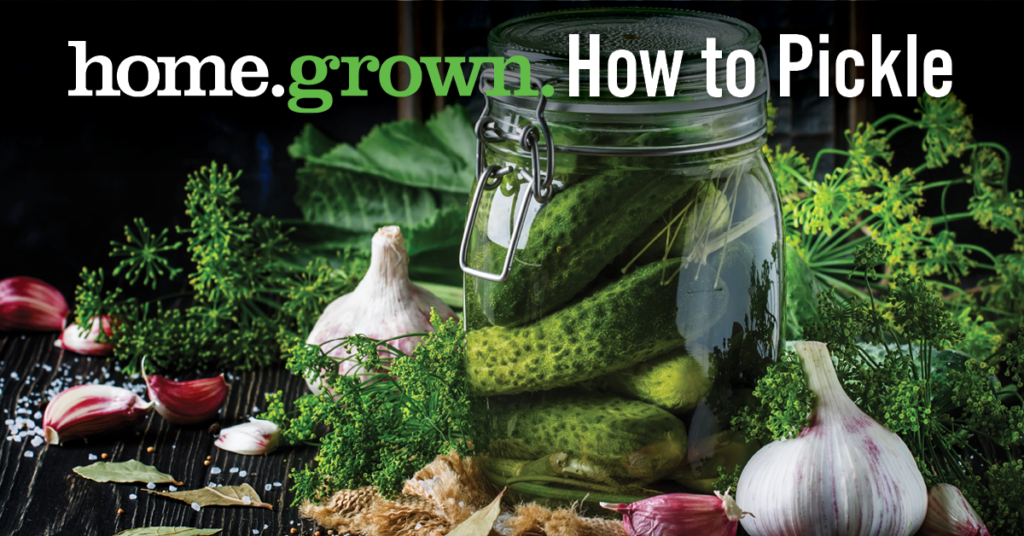Written By: Mark Larose from Garden State Growers

Happy June to you gardeners! Summer is in the air. By now, you should be enjoying some of the fruits of your labors, or annuals of your labors! Color is abounding in your garden, and on a warm day with a nice breeze, your yard or home has the fragrant scent of Spring in it. Now is the time that many people are ready to do their summer planting.
June is the time of year where the past meets the present along with a glimpse of the future. How so? Many of your flowers are just finishing up their bloom, while others are fully strutting their glory, and then again, some are just ready to burst with a rainbow of colors!
One hint that you may not have tried is to include a bed of succulents. They add a sturdy and hardy base of color and are beautiful to look at as well. If you need some other suggestions to enhance the color spectrum of your garden, consider some Coreopsis, Marigolds, Periwinkle, Hollyhock, Sunflowers or Shasta Daisies.
Also, try to do your watering at cooler times of the day after dusk to prevent quick evaporation. It’s not only the wise thing to do, but will help with your water bill as well. Don’t forget to pay attention to your lawn too. I’ve heard tell that so much attention is being paid to the garden, that sometimes, the beauty of green grass is lost in the mix.
Remember that gardening is a wonderful family tradition for many. If you have children, consider including them in this seasons planting. Remember to take pictures of your garden for Facebook and show it off to your friends.
Either way, have fun. Happy Gardening! Written By: Mark Larose from Garden State Growers
“It was the best of times, it was the worst of times”……Charles Dickens
Quoting such a famous author may seem an odd way to begin a blog on gardening, but as the weather is finally changing, I do believe that we are ready for the Best Of Times for Spring 2014.
By now your clean up should be complete and if you haven’t put out your garden gnomes, and birdbaths, make some time this weekend. Your soil should be prepped as detailed in my earlier blogs, and planting should be done according to the zone you live in and what you want to see growing this season.
The month of May is upon us and the words for the season are color, color, color! First, let me suggest looking around for color planters and pots that can accentuate your garden or balcony. There are a variety of shapes and sizes to choose from. Now, what to put into them?
Since it’s been colder, later in the season, I’m going with some Siberian Blue Grass, Clematis, and Purple Sensation, which is one of the Spring blooming ornamental onions. Snapdragons and Iris are a good tag along also.

Including some vegetables or even strawberries can make your garden productive and beautiful at the same time. Remember that it’s your garden. There are no rules for your design, as it’s only limited to your own creativity. Also, lavender is very poplar this year and will add some wonderful scents to your garden on those warm days filled with gentle breezes. Ahhhhh…….
Speaking of popular plants, have you considered, dare I say, critter prevention? Deer, rabbits and chipmunks are only a few of the potential problems. If you are a first season gardener, find out which of these potentially destructive animals live in your neighborhood and be proactive. Fences and repellents can help, but choosing plants and flowers that are less tasty is also an option. Doing your homework now can help with future enjoyment of your garden, and less frustrations.
Lastly, have you chosen your ground cover? So many people seem to overlook the beauty and need for these hardy plants. Myrtle, ivy and pachysandra are great choices. I’ve seen a few gardens where some folks even used saxifraga as a filler plant, in place of some ground cover. Think outside of the box!
Remember that gardening is a wonderful family tradition for many. If you have children, consider including them in this seasons planting. Remember to take pictures of your garden for Facebook and show it off to your friends.
Either way, have fun. Happy Gardening! Written By: Mark Larose from Garden State Growers

It’s March, and whether you are a seasoned gardener or just starting your journey into this wonderful hobby, one thing is for sure. Luck favors the prepared! I like to approach my garden with a strategy. Taking a soil sample and having it tested can give you a wealth of information on the type of fertilizer you should use.
These tasks may sound routine, but are very important to the success of any garden. Prepare to attack those weeds early on as they can strangle new growth. At the same time, you can clear your garden of leaves and debris that has accumulated over the winter. As you do that, look at the layout of your land and begin to choose the vibrant, show stopping colors that you want to see this season.
You will want to make sure you have all of your lawn and gardening equipment in working order and accounted for. Did you lend your shears to your neighbor? It’s time to get them back. While you do this, consider taking time to tend to your perennials as well. You can begin by cutting back old growth. Consider creating a compost pile. Using organic matter not only saves money, but helps the environment and your plants.
When choosing what to plant first, I have always leaned towards some beautiful pansies. They provide eye popping color in beautiful shades. Sure, in the winter they may not look their best, especially when they are buried under 8 inches of snow, rest assured they are just biding their time until Spring. Pansies are not difficult to grow. Good soil, steady moisture, and at least partial sun will provide the results you’re looking for. What they don’t tolerate is heat and humidity, which is why they thrive in spring and fall.
Plant pansies 6 to 8 inches apart. They can be used as borders, or in larger masses, but don’t count on a solid ground cover. The plants are more clumping than spreading.

Pansies respond well to regular deadheading. As often as possible, every couple of days if you can, pinch off faded blooms and any fruit (small green seed capsules) that may be forming. This will spur plants to continue blooming.
Pansies best qualities are that their early Spring bloom is very robust and pleasing to the eyes, and nose after they have been in the ground since the previous Fall. Make sure that the area where you plant has plenty of drainage and proper lighting.
Lastly, clean out any bird baths or wipe down other garden ornaments. Remember that gardening is a wonderful family tradition for many. If you have children, consider including them in this seasons planting. Remember to take pictures of your garden for Facebook and show it off to your friends.
Either way, have fun. Happy Gardening!
Don’t forget to check out our
ad this week for great floral specials in your store!
 Happy June to you gardeners! Summer is in the air. By now, you should be enjoying some of the fruits of your labors, or annuals of your labors! Color is abounding in your garden, and on a warm day with a nice breeze, your yard or home has the fragrant scent of Spring in it. Now is the time that many people are ready to do their summer planting.
June is the time of year where the past meets the present along with a glimpse of the future. How so? Many of your flowers are just finishing up their bloom, while others are fully strutting their glory, and then again, some are just ready to burst with a rainbow of colors!
One hint that you may not have tried is to include a bed of succulents. They add a sturdy and hardy base of color and are beautiful to look at as well. If you need some other suggestions to enhance the color spectrum of your garden, consider some Coreopsis, Marigolds, Periwinkle, Hollyhock, Sunflowers or Shasta Daisies.
Also, try to do your watering at cooler times of the day after dusk to prevent quick evaporation. It’s not only the wise thing to do, but will help with your water bill as well. Don’t forget to pay attention to your lawn too. I’ve heard tell that so much attention is being paid to the garden, that sometimes, the beauty of green grass is lost in the mix.
Remember that gardening is a wonderful family tradition for many. If you have children, consider including them in this seasons planting. Remember to take pictures of your garden for Facebook and show it off to your friends.
Either way, have fun. Happy Gardening! Written By: Mark Larose from Garden State Growers
“It was the best of times, it was the worst of times”……Charles Dickens
Quoting such a famous author may seem an odd way to begin a blog on gardening, but as the weather is finally changing, I do believe that we are ready for the Best Of Times for Spring 2014.
By now your clean up should be complete and if you haven’t put out your garden gnomes, and birdbaths, make some time this weekend. Your soil should be prepped as detailed in my earlier blogs, and planting should be done according to the zone you live in and what you want to see growing this season.
The month of May is upon us and the words for the season are color, color, color! First, let me suggest looking around for color planters and pots that can accentuate your garden or balcony. There are a variety of shapes and sizes to choose from. Now, what to put into them?
Since it’s been colder, later in the season, I’m going with some Siberian Blue Grass, Clematis, and Purple Sensation, which is one of the Spring blooming ornamental onions. Snapdragons and Iris are a good tag along also.
Happy June to you gardeners! Summer is in the air. By now, you should be enjoying some of the fruits of your labors, or annuals of your labors! Color is abounding in your garden, and on a warm day with a nice breeze, your yard or home has the fragrant scent of Spring in it. Now is the time that many people are ready to do their summer planting.
June is the time of year where the past meets the present along with a glimpse of the future. How so? Many of your flowers are just finishing up their bloom, while others are fully strutting their glory, and then again, some are just ready to burst with a rainbow of colors!
One hint that you may not have tried is to include a bed of succulents. They add a sturdy and hardy base of color and are beautiful to look at as well. If you need some other suggestions to enhance the color spectrum of your garden, consider some Coreopsis, Marigolds, Periwinkle, Hollyhock, Sunflowers or Shasta Daisies.
Also, try to do your watering at cooler times of the day after dusk to prevent quick evaporation. It’s not only the wise thing to do, but will help with your water bill as well. Don’t forget to pay attention to your lawn too. I’ve heard tell that so much attention is being paid to the garden, that sometimes, the beauty of green grass is lost in the mix.
Remember that gardening is a wonderful family tradition for many. If you have children, consider including them in this seasons planting. Remember to take pictures of your garden for Facebook and show it off to your friends.
Either way, have fun. Happy Gardening! Written By: Mark Larose from Garden State Growers
“It was the best of times, it was the worst of times”……Charles Dickens
Quoting such a famous author may seem an odd way to begin a blog on gardening, but as the weather is finally changing, I do believe that we are ready for the Best Of Times for Spring 2014.
By now your clean up should be complete and if you haven’t put out your garden gnomes, and birdbaths, make some time this weekend. Your soil should be prepped as detailed in my earlier blogs, and planting should be done according to the zone you live in and what you want to see growing this season.
The month of May is upon us and the words for the season are color, color, color! First, let me suggest looking around for color planters and pots that can accentuate your garden or balcony. There are a variety of shapes and sizes to choose from. Now, what to put into them?
Since it’s been colder, later in the season, I’m going with some Siberian Blue Grass, Clematis, and Purple Sensation, which is one of the Spring blooming ornamental onions. Snapdragons and Iris are a good tag along also.
 Including some vegetables or even strawberries can make your garden productive and beautiful at the same time. Remember that it’s your garden. There are no rules for your design, as it’s only limited to your own creativity. Also, lavender is very poplar this year and will add some wonderful scents to your garden on those warm days filled with gentle breezes. Ahhhhh…….
Speaking of popular plants, have you considered, dare I say, critter prevention? Deer, rabbits and chipmunks are only a few of the potential problems. If you are a first season gardener, find out which of these potentially destructive animals live in your neighborhood and be proactive. Fences and repellents can help, but choosing plants and flowers that are less tasty is also an option. Doing your homework now can help with future enjoyment of your garden, and less frustrations.
Lastly, have you chosen your ground cover? So many people seem to overlook the beauty and need for these hardy plants. Myrtle, ivy and pachysandra are great choices. I’ve seen a few gardens where some folks even used saxifraga as a filler plant, in place of some ground cover. Think outside of the box!
Remember that gardening is a wonderful family tradition for many. If you have children, consider including them in this seasons planting. Remember to take pictures of your garden for Facebook and show it off to your friends.
Either way, have fun. Happy Gardening! Written By: Mark Larose from Garden State Growers
It’s March, and whether you are a seasoned gardener or just starting your journey into this wonderful hobby, one thing is for sure. Luck favors the prepared! I like to approach my garden with a strategy. Taking a soil sample and having it tested can give you a wealth of information on the type of fertilizer you should use.
These tasks may sound routine, but are very important to the success of any garden. Prepare to attack those weeds early on as they can strangle new growth. At the same time, you can clear your garden of leaves and debris that has accumulated over the winter. As you do that, look at the layout of your land and begin to choose the vibrant, show stopping colors that you want to see this season.
You will want to make sure you have all of your lawn and gardening equipment in working order and accounted for. Did you lend your shears to your neighbor? It’s time to get them back. While you do this, consider taking time to tend to your perennials as well. You can begin by cutting back old growth. Consider creating a compost pile. Using organic matter not only saves money, but helps the environment and your plants.
When choosing what to plant first, I have always leaned towards some beautiful pansies. They provide eye popping color in beautiful shades. Sure, in the winter they may not look their best, especially when they are buried under 8 inches of snow, rest assured they are just biding their time until Spring. Pansies are not difficult to grow. Good soil, steady moisture, and at least partial sun will provide the results you’re looking for. What they don’t tolerate is heat and humidity, which is why they thrive in spring and fall.
Plant pansies 6 to 8 inches apart. They can be used as borders, or in larger masses, but don’t count on a solid ground cover. The plants are more clumping than spreading.
Including some vegetables or even strawberries can make your garden productive and beautiful at the same time. Remember that it’s your garden. There are no rules for your design, as it’s only limited to your own creativity. Also, lavender is very poplar this year and will add some wonderful scents to your garden on those warm days filled with gentle breezes. Ahhhhh…….
Speaking of popular plants, have you considered, dare I say, critter prevention? Deer, rabbits and chipmunks are only a few of the potential problems. If you are a first season gardener, find out which of these potentially destructive animals live in your neighborhood and be proactive. Fences and repellents can help, but choosing plants and flowers that are less tasty is also an option. Doing your homework now can help with future enjoyment of your garden, and less frustrations.
Lastly, have you chosen your ground cover? So many people seem to overlook the beauty and need for these hardy plants. Myrtle, ivy and pachysandra are great choices. I’ve seen a few gardens where some folks even used saxifraga as a filler plant, in place of some ground cover. Think outside of the box!
Remember that gardening is a wonderful family tradition for many. If you have children, consider including them in this seasons planting. Remember to take pictures of your garden for Facebook and show it off to your friends.
Either way, have fun. Happy Gardening! Written By: Mark Larose from Garden State Growers
It’s March, and whether you are a seasoned gardener or just starting your journey into this wonderful hobby, one thing is for sure. Luck favors the prepared! I like to approach my garden with a strategy. Taking a soil sample and having it tested can give you a wealth of information on the type of fertilizer you should use.
These tasks may sound routine, but are very important to the success of any garden. Prepare to attack those weeds early on as they can strangle new growth. At the same time, you can clear your garden of leaves and debris that has accumulated over the winter. As you do that, look at the layout of your land and begin to choose the vibrant, show stopping colors that you want to see this season.
You will want to make sure you have all of your lawn and gardening equipment in working order and accounted for. Did you lend your shears to your neighbor? It’s time to get them back. While you do this, consider taking time to tend to your perennials as well. You can begin by cutting back old growth. Consider creating a compost pile. Using organic matter not only saves money, but helps the environment and your plants.
When choosing what to plant first, I have always leaned towards some beautiful pansies. They provide eye popping color in beautiful shades. Sure, in the winter they may not look their best, especially when they are buried under 8 inches of snow, rest assured they are just biding their time until Spring. Pansies are not difficult to grow. Good soil, steady moisture, and at least partial sun will provide the results you’re looking for. What they don’t tolerate is heat and humidity, which is why they thrive in spring and fall.
Plant pansies 6 to 8 inches apart. They can be used as borders, or in larger masses, but don’t count on a solid ground cover. The plants are more clumping than spreading.
 Pansies respond well to regular deadheading. As often as possible, every couple of days if you can, pinch off faded blooms and any fruit (small green seed capsules) that may be forming. This will spur plants to continue blooming.
Pansies best qualities are that their early Spring bloom is very robust and pleasing to the eyes, and nose after they have been in the ground since the previous Fall. Make sure that the area where you plant has plenty of drainage and proper lighting.
Lastly, clean out any bird baths or wipe down other garden ornaments. Remember that gardening is a wonderful family tradition for many. If you have children, consider including them in this seasons planting. Remember to take pictures of your garden for Facebook and show it off to your friends.
Either way, have fun. Happy Gardening!
Don’t forget to check out our ad this week for great floral specials in your store!
Pansies respond well to regular deadheading. As often as possible, every couple of days if you can, pinch off faded blooms and any fruit (small green seed capsules) that may be forming. This will spur plants to continue blooming.
Pansies best qualities are that their early Spring bloom is very robust and pleasing to the eyes, and nose after they have been in the ground since the previous Fall. Make sure that the area where you plant has plenty of drainage and proper lighting.
Lastly, clean out any bird baths or wipe down other garden ornaments. Remember that gardening is a wonderful family tradition for many. If you have children, consider including them in this seasons planting. Remember to take pictures of your garden for Facebook and show it off to your friends.
Either way, have fun. Happy Gardening!
Don’t forget to check out our ad this week for great floral specials in your store! 


